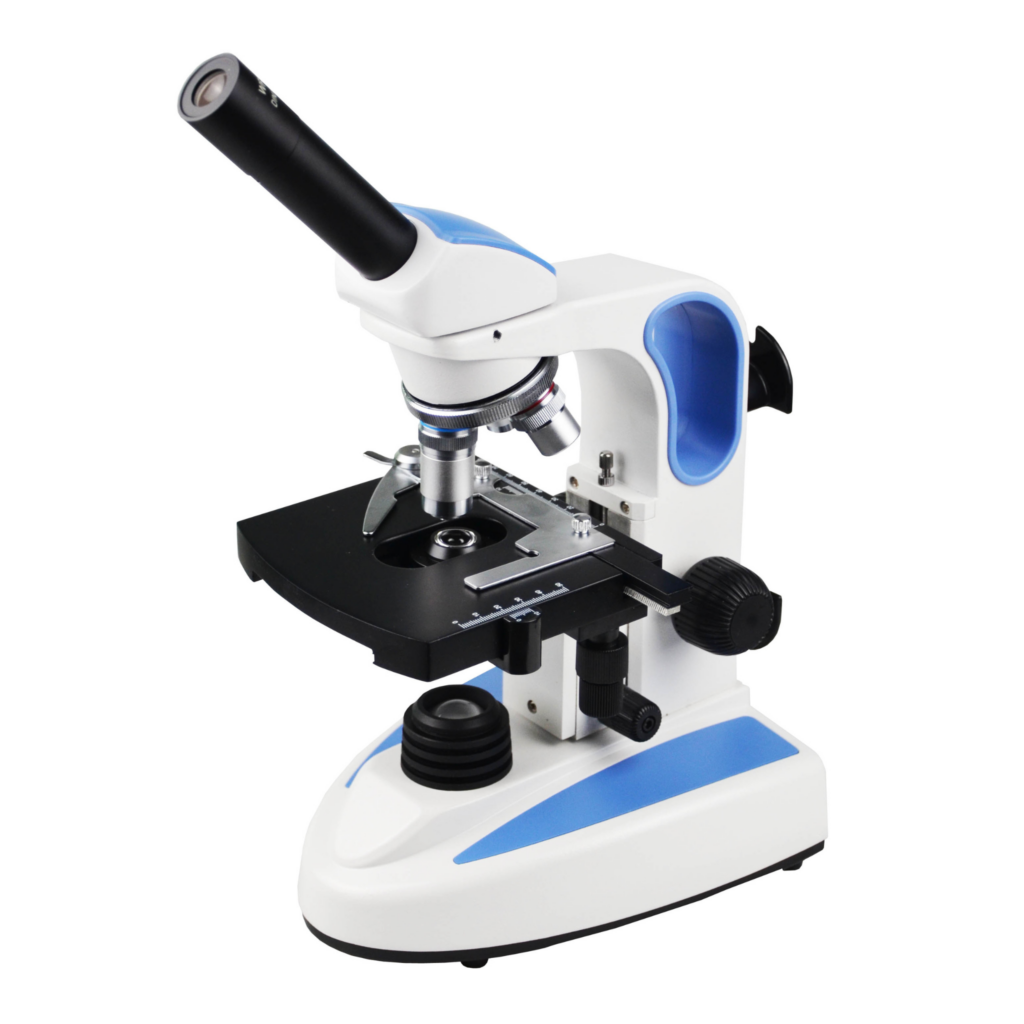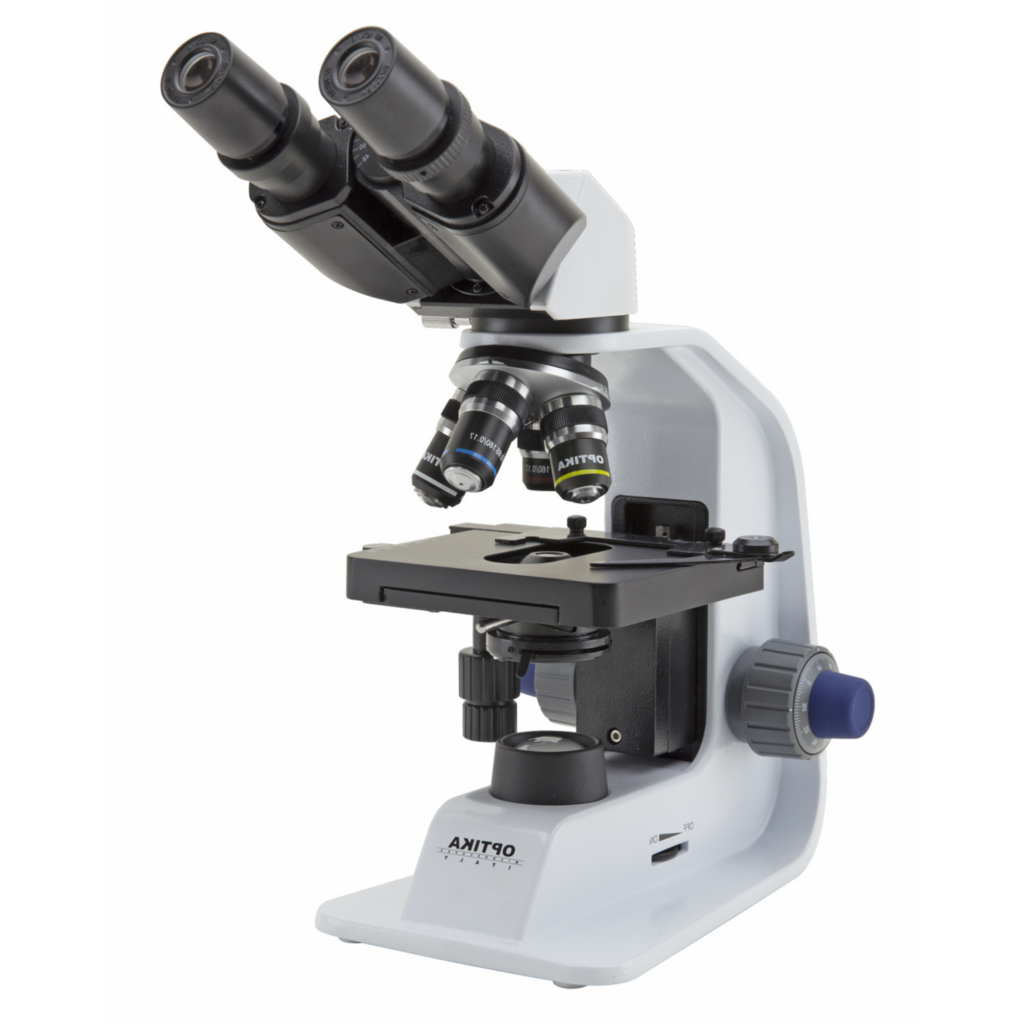
What should I look for when purchasing biological microscopes for my school?
When looking to purchase a microscope for your school laboratory, there are several important considerations you need to take in to account.
For schools, a common misbelief is that a magnification of 1000x is required to view specimens as small as bacteria, however 400x magnification is more than adequate. This is achieved by having a 40x objective and a 10x eye piece. A monocular microscope for school students is preferable while they are learning to use.
Some other considerations when looking to procure microscopes for a school would be:
- Ease of Use – When school students are learning how to use to a microscope for the first time, it’s important to consider how easy it will be for them to use. A monocular microscope is the easiest for a student to learn on when starting out.
- Weight – A lighter microscope is ideal in a school environment as they are easier to move around classrooms and laboratories.
- Affordability – When budgets are stretched, monocular microscopes are a good solution for schools, as they provide adequate features at an affordable price.
- Maintenance – It’s important to understand how you can clean and maintain your microscopes to ensure you can extend their longevity. Look for a microscope you can clean easily and regularly.
- Quality – Microscopes used in schools need to be hard wearing due to their frequent use and constant movement between labs. Check for quality materials such as glass eyepieces and objective lenses, rather than plastic ones, before you purchase.
- Accessories – Consider what accessories you may need in additional to the microscopes such as mechanical stages, digital eyepieces and covers to protect your equipment.
- Illumination – The lighting of a specimen is important in achieving high-quality images in microscopy, critical photomicrography, and digital imaging. If you are taking images or videos check that the microscope has adequate LED lighting.
Our recommended biological microscopes:
Specifications:
- Viewing Head: Monocular 45 degree inclined and 360 degree rotatable
- Eyepiece: WF 10X 18mm field of view
- Objective: 4, 10, and 40x
- Stage: Mechanical slide movement
- Condenser: N.A 1.25 with Iris diaphragm, focusable
- Illumination: LED
- 5-year warranty

Pros:
- Easy to use
- In-built handle, easy to carry around.
- Mechanical stage allows the user to move the slides by 2 knobs without moving the slide by hands
- Easily upgrade the microscope with an Objective 100x
Cons:
None
Optika B-159 Biological Microscope
Specifications:
Observation mode: Brightfield.
Head: Binocular, 30° inclined; 360° rotating.
Eyepieces: WF10x/18 mm, secured by screw.
Nosepiece: Quadruple ball bearings revolving nosepiece.
Objectives: High Contrast Achromatic 4x/0.10, 10x/0.25, 40x/0.65, 100x/1.25 (Oil/Water). All with anti-fungus treatment.
Specimen stage: Mechanical stage, 125x116mm, 70×30 mm X-Y movement range. Vernier scale on the two axes, accuracy: 0.1mm.
Focusing: Coaxial coarse and fine focusing mechanism with limit stop to prevent the contact between objective and specimen. Adjustable tension of coarse focusing knob.

Condenser: Abbe N.A. 1.25, pre-centered, focusable, with iris diaphragm.
Illumination: X-LED1 with white 1 W LED and light intensity control.
Colour temperature: 6,300 K. Multi-plug 100-240Vac/5Vdc external power supply.
Pros:
- Binocular head for advanced users/ teachers, can reduce the eyestrain that a monocular can cause.
- N-PLAN Objectives for total flatness
- Cordless use
- 10 year warranty on both electrical and mechanical parts
- Made in Italy
Cons:
- More expensive than the monocular microscopes
We always recommend trialing the microscope before purchasing. Contact us to arrange a free 14 day trail for your school.
View our microscope, spare parts and accessories ranges or to read more take a look at our FAQs.
